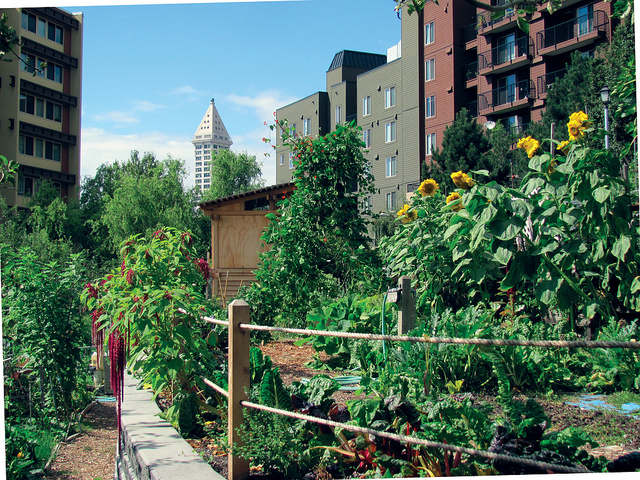About City Blooming
About City Blooming
Blog Article
The smart Trick of City Blooming That Nobody is Discussing
Table of ContentsIndicators on City Blooming You Need To KnowGetting The City Blooming To WorkThe Facts About City Blooming RevealedAll About City BloomingThe smart Trick of City Blooming That Nobody is Discussing

As you walk the streets of the Bronx, Southside Chicago or East Oakland, you might see have actually also seen big stories of ripening fruits and vegetables being harvested. However, exactly what are metropolitan farms and neighborhood gardens? Are they different? If so, just how? And much more significantly, how can you sustain them? Urban farming, urban farming, or urban horticulture is the technique of cultivating, handling and distributing food in or around metropolitan locations.
Normally, metropolitan farming as a practice is a larger financial investment than horticulture. There are countless extra hours spent into the minutiae of farming, from the crop plan to the tending of your beds. This time commitment takes on an entire new definition once you recognize the goal that is being worked in the direction of and dedicated, namely that of obtaining an abundant return of plants to be eaten.
A neighborhood garden is a single parcel gardened jointly by a team of individuals. Area yards use either individual or common plots on private or public land while producing fruit, vegetables, and/or plants expanded for their attractive look. The standard model here is that a large team of people each add a reasonably small quantity of time to working their very own story, and get the fruits of their labor because of this.
4 Simple Techniques For City Blooming
:max_bytes(150000):strip_icc()/womanonrooftopurbangarden-7fffbb3897ac48f390d94b9545d4d082.jpg)
There are community gardens, a lot of whom Little Axe Peppers has actually partnered with, that deal aid to evacuees, low-income households, kids teams, and neighborhood organizations by aiding them develop and grow their own yards. The distinctions between neighborhood garden and urban ranch are nuanced, though in the end the exact same standard activity takes placefood crop cultivation but within various business frameworks.
Urban ranches are generally extra company and modern technology oriented, with the key objective of taking full advantage of returns and selling fruit and vegetables. Business city ranches are usually targeted at expanding production on generally small acreage with advancements in technologies such as aquaculture, hydroponics, and greenhouses and may companion with a commercial cooking area to develop locally-produced value-added products such as jams and sauces.
The Main Principles Of City Blooming
The produce is generally grown on a much smaller sized range and is taken home to consume at home or to share. By offering much required eco-friendly spaces in penniless, concrete city locations, they permit the benefits of backyard horticulture to those doing not have backyards, and work as superb instances of self-organization and community activism.
Some neighborhood yards, often in metropolitan locations, relocate into growing for industrial use while some metropolitan ranches open up their land for more socially mindful benefits. check these guys out No matter of how you define and set apart the two, they are both favorable forces for great in cities around America and the world.
As every one of Tiny Axe Peppers' hot sauces are sourced with peppers from community yards, your purchases directly help money these neighborhood tasks (https://cityblooming.jimdosite.com/). Take component in the change by.
A close friend of mine lately commented in a discussion about horticulture that "It's interesting, I've constantly assumed that farming as a practice is somewhat like horticulture. As I invested more and more time in my Urban Farming course I have actually come to recognize that to claim that horticulture is a mini extension of farming would certainly be a little bit of stretch.
6 Simple Techniques For City Blooming
They both rotate around the treatment of plants for some goal that can be food, earnings or just the satisfaction of the craft. Furthermore they both require a financial investment in addition to a time investment, something that a great deal of individuals in our quick paced life do not have a lot of - sustainability.
We can see that the similarities are abundant, but are the differences enough to create a difference? As a student at NYU I have the chance to deal with the leave It Much better Foundation, a team that instructs basic nutrition and horticulture to senior high school trainees. https://telegra.ph/City-Gardening-Embracing-Green-Spaces-in-Urban-Life-06-27. This experience offered me a comprehensive foray into the world of amateur horticulture past what many people have touched with
Farming as a method is a bigger investment than gardening. There are plenty of much more hours invested right into the trivial matters of farming, from the crop plan to the often tending of your beds.
The ordinary gardener sets about his tasks as a chore as opposed to a necessity and because of this distinguishes his or herself from the farmer. Nevertheless with this distinction in hand, they are both soothing and enjoyable exercises that any person can grab, which on its own should be an ad for both.
The Ultimate Guide To City Blooming
Something went wrong - City gardening. Wait a minute and try once more Try once more
Report this page